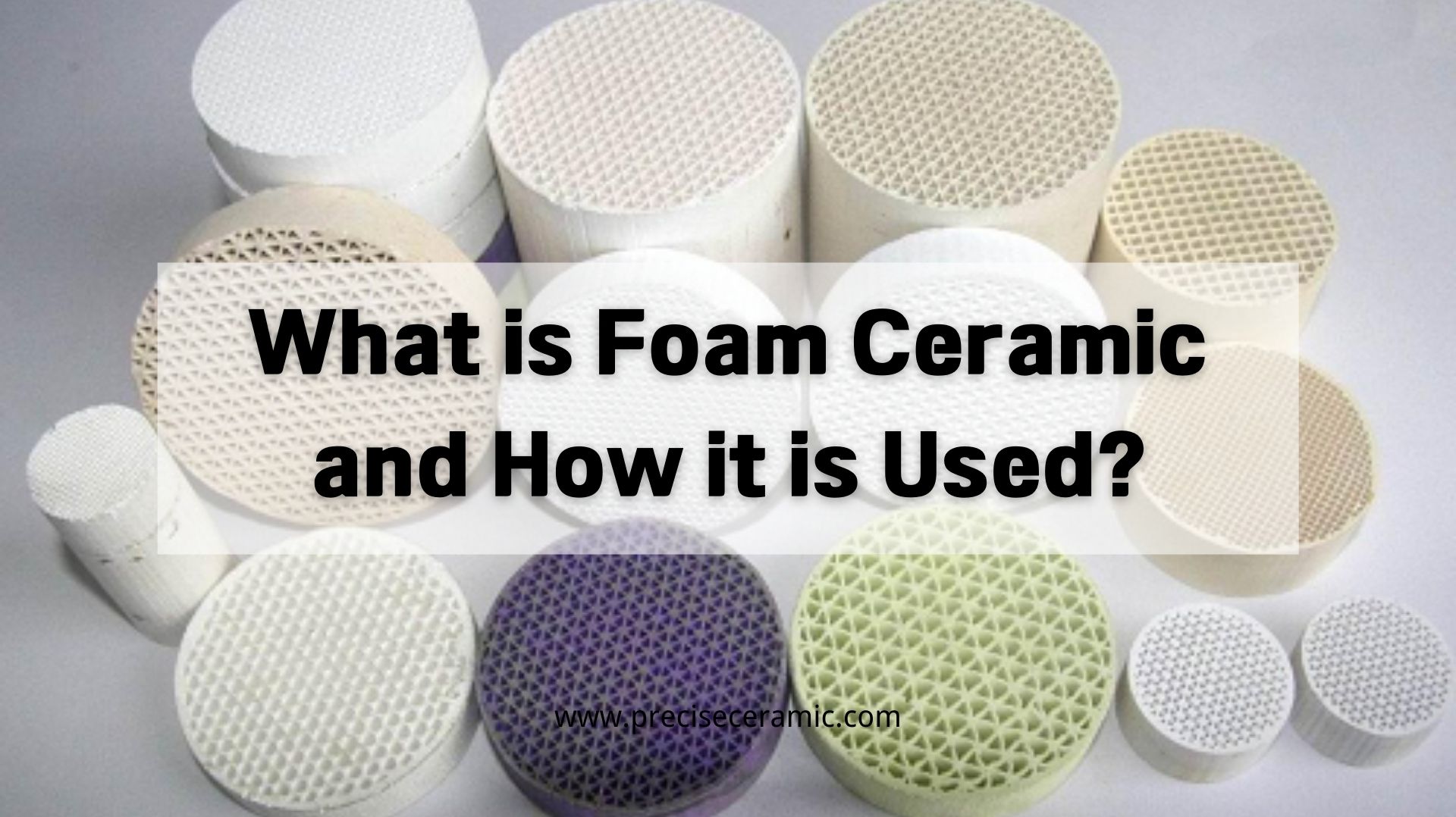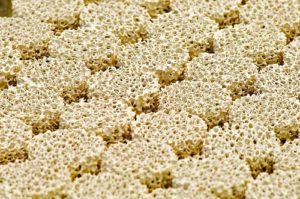- Alumina
- Boron Nitride
- Zirconia
- Other Ceramics
- Applications
- Contact

The development of foamed ceramics, or ceramic foam, began in the 1970s as a kind of porous material with high-temperature properties. The pores of foamed ceramics are interlinked with the porous bodies of the three-dimensional network structure, which is significant in melting metal, gas-liquid filtration, purification separation, chemical catalytic carrier, sound absorption and shock absorption, advanced insulation materials, biological materials, special wall materials, and sensor materials. Therefore, it is widely used in environmental protection, energy, chemical, biological and other fields.
Diatomaceous soil foam ceramics are mainly made of selected diatomaceous soil which is sintered with clay.
Aluminosilicate foam ceramic are refractory clay clinker, bauxite, sillimanite, and synthetic mullite particles, which have resistance to acid and alkaline, and the temperature of use can reach 1000 ℃.
High silicate ceramic mateirals are composed of hard porcelain slag, acidproof ceramic slag and other acidproof ceramic particles, which has water resistance, acid resistance, and the temperature of use can reach 700 ℃.
Different types of electro-fused corundum and silicon carbide (SiC) particles are used as aggregate, with strong acid resistance, high-temperature resistant properties.
The basic material is zirconia (ZrO2), which has high strength and high-temperature impact. It is resistant to the high temperature of 1700 ℃.

Zirconia foam ceramic filter
Foamed ceramics have the high specific surface, which can be used as catalyst carrier to increase effective contact area and enhance the catalytic effect. It has the advantages of heat resistance, non-pollution, non-poisoning, and low cost, and has been widely used in the treatment of toxic and odorous gases in the fields of automobile exhaust and chemical industry to further protect the environment.
Due to the existence of closed pores in foam ceramics, the efficiency of heat release and the convection during heat transmission are reduced, which makes foam ceramics have low thermal conductivity and excellent thermal shock resistance, so it is an ideal heat-resistant material.
For example, the typical heat-resistant material made of foam ceramics is heat-resistant brick, which is made of ZrO2, SiC, silicon nitride (Si3N4) and magnesia material, and its use temperature as high as 1600 ℃. At present, the best insulation in the world is this kind of material, called “Super Insulation”, which is used for the insulation of the outer shell of the space shuttle.

The thermal insulation used in aerospace
At present, foamed ceramic is also used as a porous media burner. The good heat exchange provided by the ceramic material reduces the flame temperature, so the various types of fuel are pre-mixed on the surface of inert porous ceramics or near porous ceramics, which not only saves energy but also significantly reduces COx and NOx emissions.
Foam ceramics have a large number of the three-dimensional network structure of pores. When sound waves are transmitted into the interior of the porous body, they cause air in the pores to vibrate and cause friction in the ceramics. Due to vicious action, sound waves change into heat and disappear, thus achieving the effect of absorbing sound.
At present, the research on porous hydroxyapatite biological foam ceramics is being carried out. Porous hydroxyapatite ceramics are very similar to inorganic substances of human bones and teeth, which are non-toxic to the human body and have excellent biocompatibility and bioactivity. Moreover, the interconnected pores facilitate the microcirculation of tissue fluid and promote the infiltration and growth of cells.
Thank you for reading our article and we hope it can help you to have a better understanding of what foam ceramic is and how it is used in different industries. For more information about ceramic materials, please visit https://www.speciaLceramicparts.com/.
Great research. Interesting information. Thanks for the post